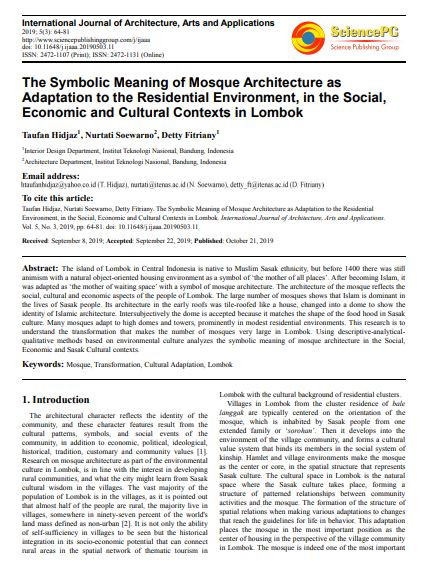
Hidjaz, Taufan, Nurtati Soewarno, and Detty Fitriany. “The Symbolic Meaning of Mosque Architecture as Adaptation to the Residential Environment, in the Social, Economic and Cultural Contexts in Lombok.” International Journal of Architecture, Arts and Applications 5, no. 3 (2019): 64-81.
I agree to the terms outlined below:
You agree to upload and assign Mosqpedia Database the rights to use the content worldwide and in perpetuity across all current and future media platforms. Mosqpedia Database may edit, copy, adapt and translate your contribution.
The content will be distributed under the Creative Commons Attribution-Deed – Attribution-NonCommercial-NoDerivatives 4.0 International – Creative Commons
All data will be stored in line with data protection regulations.